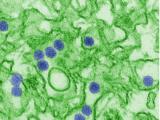Findings from a case-control study in Brazil published yesterday strengthened the connection between Zika infection and Guillain-Barre syndrome (GBS) and found that older adults were hardest hit by the complication.
A team from Brazil's health ministry and collaborators from the US Centers for Disease Control and Prevention (CDC) published their study in PLoS Neglected Tropical Diseases.
GBS patterns followed Zika outbreak
During Brazil's Zika outbreak, local health officials noticed a rise in GBS cases in the areas experiencing spikes in Zika infections. A similar rise had been reported in French Polynesia's outbreak in 2013, but the authors noted that the connection between the two conditions had never been systematically studied in a case-control study.
For their investigation, the team interviewed and tested 41 GBS patients reported by doctors and hospitals between Jan 1 and Aug 31 of 2015 in Salvador, the capital of Bahia state, located in the northeast, the worst-affected area in Brazil. Then for each patient, the researchers included two age-group–matched controls from the same neighborhood.
They tested serum samples for Zika and dengue antibodies, interviewed people about their symptoms, assessed patients for motor deficits, and estimated the GBS incidence for 2015 based on Brazilian population data.
Higher risk in older people
Based on their analysis, the scientists found that the incidence of GBS in the Salvador area was four times higher than expected, with the risk even higher in older adults.
From April through July of 2015, the GBS incidence in people age 12 and older was 5.6 cases per 100,000 population, which rose markedly with increasing age to 14.7 per 100,000 population in those ages 60 and older.
When they compared case-patients with controls, they found no differences in demographics or exposure before GBS symptoms began.
People affected by GBS were more likely than controls to report hallmark Zika symptoms (82% versus 21%), which occurred roughly 2 weeks before GBS symptoms began.
Based on a clinical review of patients' medical records, the GBS patterns in Brazil fit the typical disease profile seen with GBS, but the researchers said the steep increase in older people is unusual: The incidence was 10 times higher in the oldest group than in the youngest group.
GBS progression was more rapid in Zika-affected GBS patients from Salvador compared with other types of GBS patients. The team noted that more rapid progression was also seen in Zika-affected GBS patients in French Polynesia's outbreak.
Most of the GBS patients in the study regained lost function after they recovered, but 41% still required help with walking 6 months later, which the researchers said is higher than the 20% that they'd expect. The 6% mortality rate in the Salvador GBS patients was similar to that of GBS patients in the United States and Europe.
Lessons learned, more study needed
The researchers concluded that although their findings and others in Zika outbreak countries strongly suggest a connection between Zika illness and GBS, that link and the higher incidence in older people should be confirmed with prospective studies during outbreaks.
In the meanwhile, the findings suggest that targeting messages about GBS to older people may be useful in Zika settings, they said, adding that the patterns identified in the study could guide preparedness steps, such as building the capacity to diagnose and treat GBS during Zika outbreaks.
More US Zika-linked birth defects
In other Zika developments, the CDC today reported that 2 more babies have been born in the United States with Zika-related birth defects, raising the total to 95. The number of pregnancy losses remained the same, at 8.
In the US territories, 4 more babies have been born with Zika-linked birth defects, pushing the total to 132, as the number of pregnancy losses related to the disease stayed at 7.
Overall, 1,862 US women affected by Zika virus have completed pregnancies with or without delivering a baby with congenital defects. In the territories, 3,258 women with evidence of Zika have completed their pregnancies.
Knowledge in pregnant women
Finally, a survey of Zika knowledge in pregnant women and community members in the US Virgin Islands (USVI) found that most knew that the virus is spread by mosquitoes and is linked to microcephaly. Fewer of them, though, knew that the disease could spread sexually, researchers from the CDC and the USVI reported today in the latest issue of Morbidity and Mortality Weekly Report (MMWR).
The team said the survey helped local health officials identify knowledge gaps and better target their health messages about Zika virus.
See also:
Aug 30 PLoS Negl Trop Dis abstract
Aug 31 CDC Zika update
Aug 31 MMWR report















